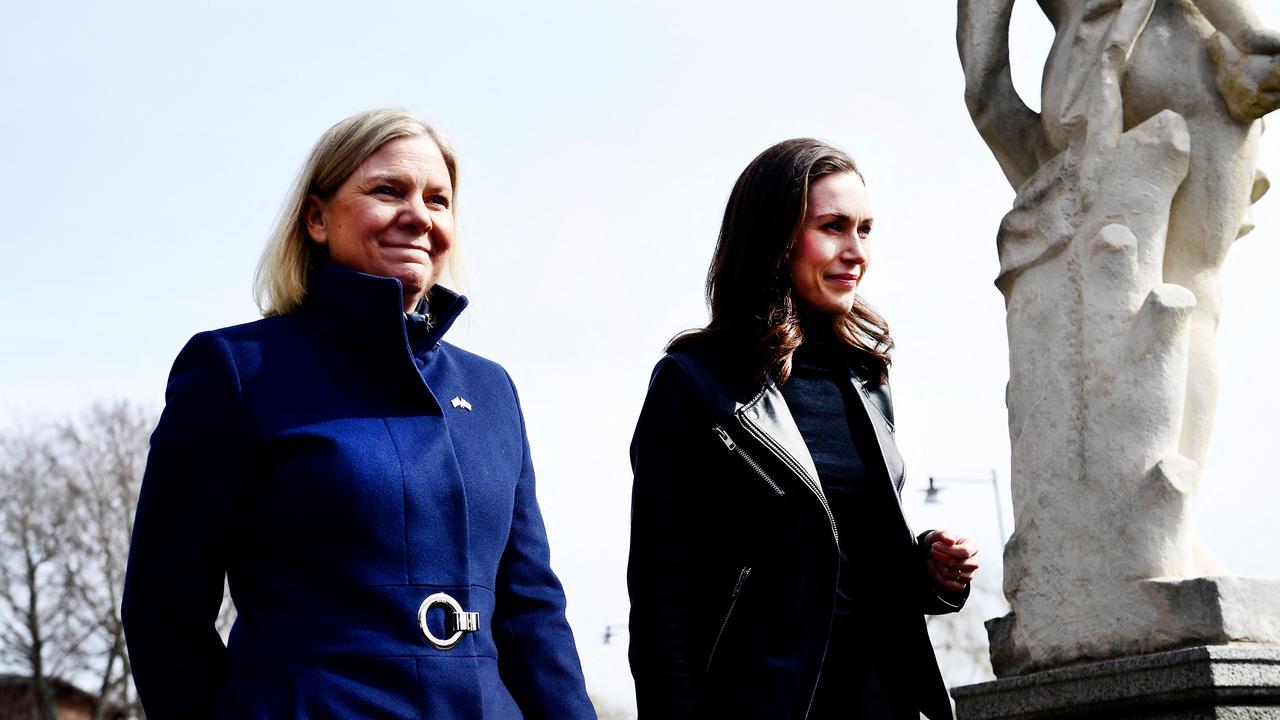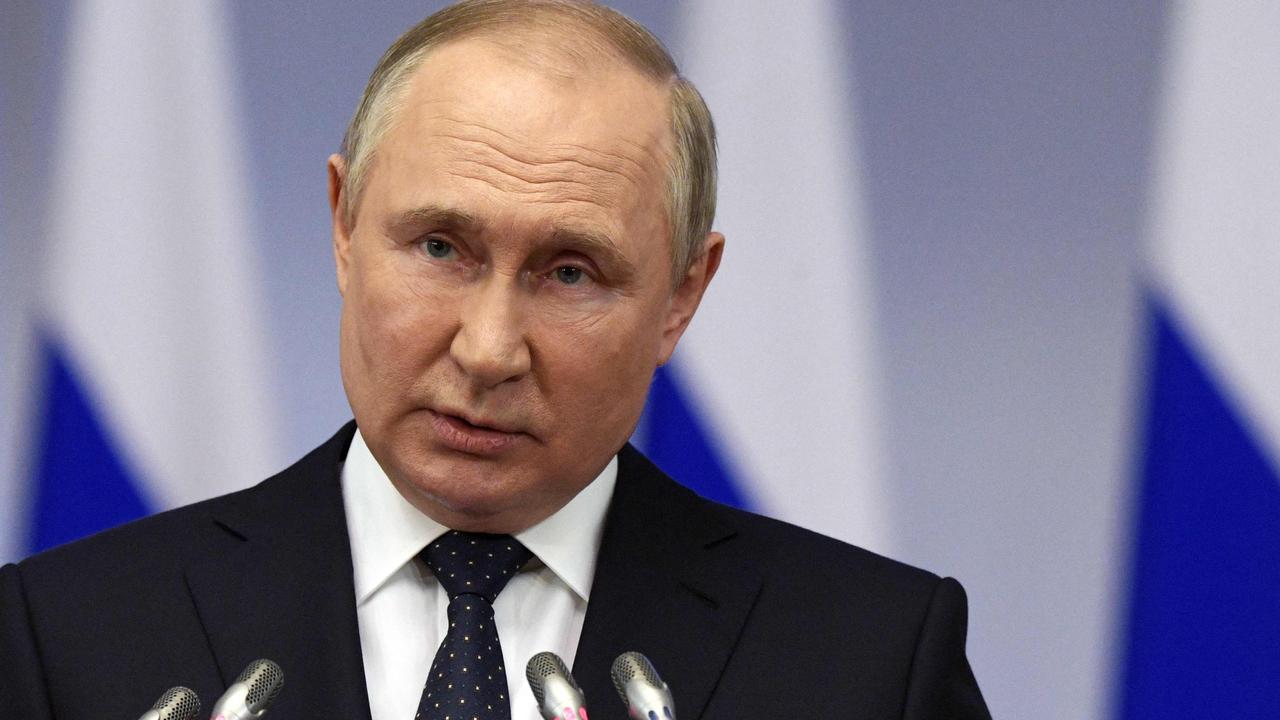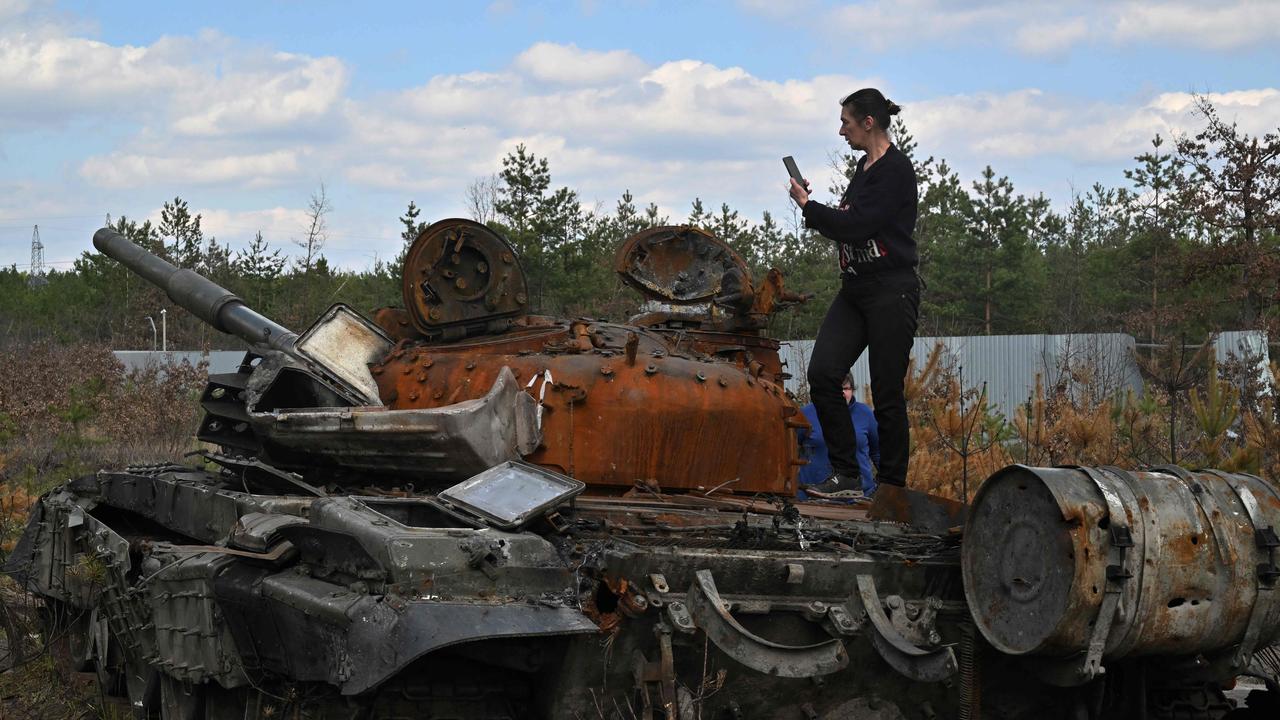Sweden and Finland consider joining NATO as Putin blows up
They’re known for being neutral, but this looks set to change in a big way – and Russian President Vladimir Putin isn’t happy.
Ukraine has destroyed Russian President Vladimir Putin’s ability to seize control of northeastern Europe. But Sweden and Finland still fear a Russian attack.
For the past decade, the threat of invasion has loomed large over the Baltic States of Sweden, Finland, Estonia, Latvia, Lithuania and Poland.
Mr Putin’s threats have not been ignored.
In fact, his belligerence prompted the North Atlantic Treaty Organisation (NATO) redeployment which he says was the “security threat” that prompted his unprovoked assault on Ukraine.
It’s a token force.
But it’s also a demonstration of NATO’s willingness to defend its members.
And that protection suddenly seems very attractive to Finland and Sweden – both nations which remained neutral for the entirety of the cold war. Finland also borders Russia down its entire eastern side.
“Before Russian President Vladimir Putin launched his invasion of Ukraine, the question of NATO membership was barely part of the political debate in Finland and Sweden,” states European Council on Foreign Relations co-chair Carl Bildt.
“In response to Russian aggression, both countries are reassessing their security policies, and seeking NATO membership is rapidly emerging as the most realistic option.”

It’s not what Mr Putin wants to hear.
Russia’s Deputy Foreign Minister Alexander Grushko has responded to the talks by saying Moscow “will be forced to take security and defence measures that we will deem necessary” in response.
Last week, the Russian frigate Neustrashimy test-fired a nuclear-capable hypersonic missile in the Baltic Sea. And the enclave of Kaliningrad between Poland and Lithuania practised mobilisation manoeuvres.
But such signalling is more likely to convince Finland and Sweden of Russia’s hostility than deter any decision to join NATO.
And that’s even considering Russia’s military may soon be a spent force.
Analysts put Russia’s losses at roughly 25 per cent of its entire invasion effort. Ukraine goes so far as to claim that 60 out of the 120 Russian battalion tactical groups (BTGs) deployed in February have been “rendered ineffective”.
Putin defanged
On Wednesday, Mr Putin threatened to react with “lightning-quick” force if NATO intervened in Ukraine.
“[Countries] that get it into their heads to meddle in ongoing events from the side and create unacceptable strategic threats for Russia, they must know that our response to counterpunches will be lightning-quick. We have all the tools for this that no one else can boast of having,” the Russian leader warned.

But, apart from his nuclear arsenal, he no longer has much to boast about.
Ukraine’s authorities claim to have destroyed some 940 Russian main battle tanks, 190 aircraft, 160 helicopters, 420 artillery pieces and eight ships.
These numbers cannot be confirmed.
Other estimates put the figure at 571 tanks, 26 aircraft and 38 helicopters.
“Some units are much more devastated than others,” a senior Pentagon official said. “We’ve seen indications of some units that are literally, for all intents and purposes, eradicated. There’s just nothing left of the BTG except a handful of troops and maybe a small number of vehicles. They’re going to have to be reconstituted or reapplied to others.”

This week, US Secretary of Defence Lloyd Austin said that the White House expects to see “Russia weakened to the degree that it can’t do the kinds of things that it has done in invading Ukraine”.
Some military analysts say that’s already the case.
Centre for Strategic and International Studies (CSIS) adviser Mark Cancian told The Times in London that Russian losses are the equivalent of two years worth of tank production, one year of aircraft deliveries and several years’ worth of missile manufacture.
And open-source investigations unit Bellingcat estimates Russia has already expended some 70 per cent of all its available precision-guided missiles.
Then there’s the human toll.
Kremlin spokesman Dmitry Peskov has admitted Russia has experienced “a huge tragedy” with “significant losses of troops”. He wouldn’t say how many.
Estimates of Russian troop casualties vary wildly, from Moscow’s 1500 to Ukraine’s 21,000. Whatever the case, many of these are from “elite” units such as the paratroops that failed to seize Hostomel Airport in the opening days of the war.
Such a loss of accumulated experience and training cannot be quickly replaced.
Especially when it comes to the 10 generals Russia has so far lost.
A force to reckon with
Sweden and Finland have already taken sides.
They’ve both delivered a significant amount of weaponry – including 10,000 antitank guns – to Ukraine.
But their move to join NATO is a surprise.
During the Cold War, both nations felt that any open allegiance with the West would make their position even more precarious.
“[The] official policy was one of strict military non-alignment, but [Sweden] also made concealed preparations to co-operate with the United States and NATO in the event of war,” Mr Bildt writes.
With the fall of the Soviet Union, both Sweden and Finland joined the European Union.
But neither felt the need to join NATO.
Now they do.
“Russia’s invasion of Georgia [in 2004] revealed that its threshold for using military force to pursue its political objectives was substantially lower than many had thought, and a distinctly revisionist tone started to creep into Moscow’s policy pronouncements,” Mr Bildt says.
But the outright invasion of Ukraine in February changed everything.
“The Russian leader and his acolytes have made it clear that they wish to replace the post-1989 security order in Europe with arrangements that impinge on the sovereignty of other countries,” he says.
And that “political earthquake” has caused Sweden and Finland to reassess their security situation urgently.
Their neighbour is giving them a real cause for concern.
“The Putin regime – whether he or one of his associates is at the helm – is unlikely to give up its imperial ambitions as long as it remains in power,” Mr Bildt says. “It is impossible to predict what kind of country Russia will be in the decades ahead, but what is likely to emerge is a country that is both weaker in economic and military terms and more desperate and dangerous in political terms.”
Bordering on insanity
Mr Putin says the Ukraine invasion was to neutralise “a real danger of … a major conflict that would have unfolded on our territory according to other people’s scripts”.
Exactly what form that “real danger” takes appears associated with vague accusations of NATO “expansionism”.
Mr Putin may be referring to the 4600 troops NATO sent to Latvia, Lithuania, Estonia and Poland in 2017. It was a response to the Russian leader’s invasion of Ukraine and annexation of Crimea in 2014.
“These forces are a defensive and proportionate deterrent force, fully in line with NATO’s international commitments,” NATO said. “They send a clear message that an attack on one ally would be met by troops from across the alliance.”
If Mr Putin sought to nullify any NATO threat, he’s achieved the opposite.
“Following Russia’s unprovoked invasion of Ukraine, Allies have agreed to establish four more multinational battle groups in Bulgaria, Hungary, Romania and Slovakia,” a NATO statement reads.
This brings the total number of units to eight, spaced evenly along NATO’s eastern flank – from the Baltic Sea in the north to the Black Sea in the south.
It’s nothing like the forces Moscow has arrayed against them.
But if Sweden and Finland join up, the balance will shift significantly.
“Each country brings considerable military capabilities to the alliance: Finland maintains an army with very substantial reserves, and Sweden has strong air and naval forces, particularly submarine forces,” says Mr Bildt. “Integrated control of the entire area will make the defence of Estonia, Latvia, and Lithuania easier, since Swedish territory and airspace, in particular, are important for such efforts.”
A spent force?
A single Russian BTG: These are supported by 10 main battle tanks, 46 armoured fighting vehicles, 15 artillery vehicles, 10 air-defence vehicles and dozens of trucks containing everything from jamming equipment and drones to fuel and mobile kitchens.
In January, Russia had 168 BTGs in total. And these are just its mobile armoured warfare units. Russia has many other military formations to fall back on.
About 120 BTGs were deployed to the border with Ukraine. About 76 of these units are currently fighting in the Donbas region.
Moscow says it is mobilising 10 new battalion tactical groups and strengthening those that have suffered losses. Doing so will involve fresh conscripts, reactivated retirees and old combat equipment pulled out of reserve.
This will take time.
Equipment needs to be refurbished. Troops need to be trained. Combat operations must be practised.
And morale is an important consideration.
Mr Putin’s troops have been showing signs of losing their will to fight.
Ukraine wasn’t the walkover they were promised. Others reportedly didn’t even know they were going to war.
Unconfirmed reports suggest 60 paratroops have been jailed for refusing to return to the front line. And an elite Spetsnaz special forces unit is also said to have mutinied after being mauled fighting in Mariupol.
And evidence of self-sabotaged vehicles and equipment is a favourite subject of Ukraine’s social media campaign.
This may be why the Russian President continues to allude to using his nuclear force.
It’s the only ace he still has up his sleeve.
“We won’t boast about it: We’ll use them if needed, and I want everyone to know that. We have already taken all the decisions on this.”
Jamie Seidel is a freelance writer | @JamieSeidel






